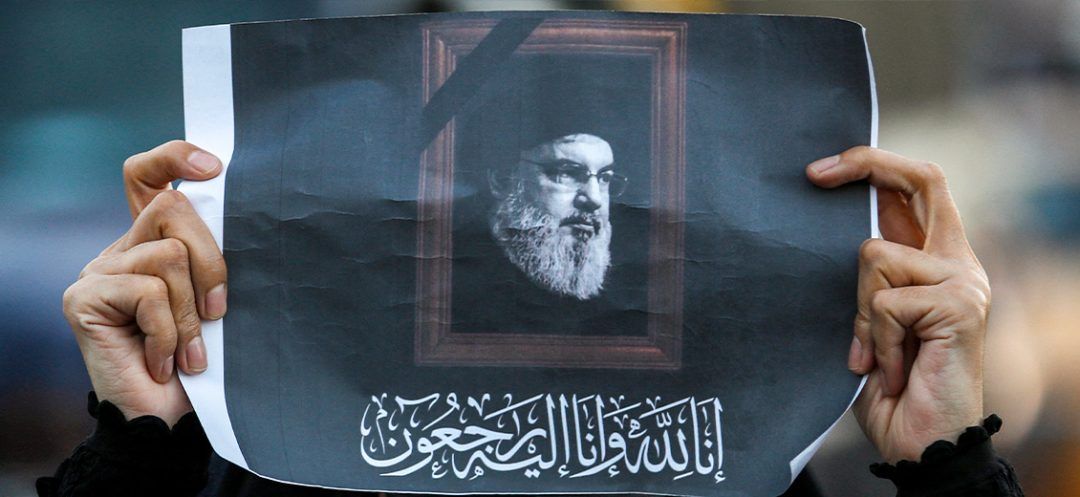
Hassan Nasrallah, the Hezbollah leader who commanded the pro-Iranian group for 32 years, was assassinated by Israel on Friday in Beirut's southern suburb. This marks one of the most perplexing chapters in a saga that has been ongoing since October 8. But how did Israel succeed in eliminating a man who believed himself untouchable?
One of the most intriguing theories about the assassination comes from Saudi channel al-Hadath and Israeli newspaper Maariv.
An Iranian Trojan horse scheme?
According to these media reports, the operation began well before the Israeli bombing, during a meeting between Nasrallah and an individual who had arrived from Iran. This person allegedly shook hands with the Hezbollah leader, applying an invisible substance to his palm that allowed Israel to precisely track his movements.
Although the existence of this device remains unconfirmed, it is believed to have enabled Israeli intelligence to locate Nasrallah in real time. According to this theory, once the Hezbollah leader reached his headquarters in Dahyeh, Israel only needed two minutes to verify his presence.
At that moment, Israeli aircraft initiated airstrikes on the Hezbollah headquarters, dropping approximately 80 tons of bombs on the location.
According to Maariv, Nasrallah succumbed to asphyxiation after taking refuge in a poorly ventilated room at the headquarters, where toxic gases from the bombing had seeped in.
The handshake theory highlights a chilling truth: Israel appears to have the capability to penetrate the thickest walls, both literally and figuratively.
Data, Israel’s most powerful weapon
Israel's ability to locate and eliminate the leader of Hezbollah stems from a meticulously crafted intelligence strategy developed over many years. According to reports from media outlets such as The Financial Times, Tel Aviv has made significant investments in advanced technologies to continuously monitor Hezbollah and its operatives.
Innovations in drones, reconnaissance (spy) satellites and cyber surveillance have enabled Israel to gather extensive data on Hezbollah and meticulously track the movements of its senior officials.
Reports suggest that Israel has substantially enhanced its understanding of Hezbollah, scrutinizing not only its military capabilities but also its political maneuvers, funding sources and alliances with regional actors, particularly Iran and Syria.
Unit 8200, the Israeli intelligence division responsible for intercepting and decrypting communications, is believed to have played a crucial role in this operation. Utilizing sophisticated cyber-espionage techniques, Israel successfully intercepted internal communications within Hezbollah and monitored the movements of key figures, including its secretary-general.
Furthermore, Unit 9900, which specializes in satellite image analysis and the detection of subtle changes on the ground, is reported to have confirmed Nasrallah's presence in his bunker in the southern suburb of Beirut shortly before the strike.
Syria: the original sin?
Nasrallah’s death comes at a time when, despite Hezbollah's military strength, the organization is increasingly vulnerable to infiltration. The group's engagement alongside Bashar al-Assad during the Syrian war has weakened its internal security mechanisms. This prolonged presence in Syria has likely opened the door to Israeli infiltrations, facilitating the collection of crucial intelligence.
According to reports, Israeli infiltrations have intensified, partly due to the growing laxity within Hezbollah, already weakened by its losses in Syria and its alliances with foreign intelligence services, particularly those of Syria and Russia. These collaborations may have compromised the group’s internal discipline, making Nasrallah and his inner circle more exposed to Israeli operations.
Indeed, if Israeli intelligence could capture Adolf Eichmann in Argentina in 1960, they are just as capable of tracking down Hassan Nasrallah in 2024.
Read more





Comments